Exploring the Second Tallest Building in the World
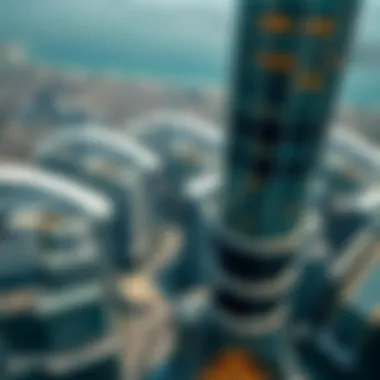
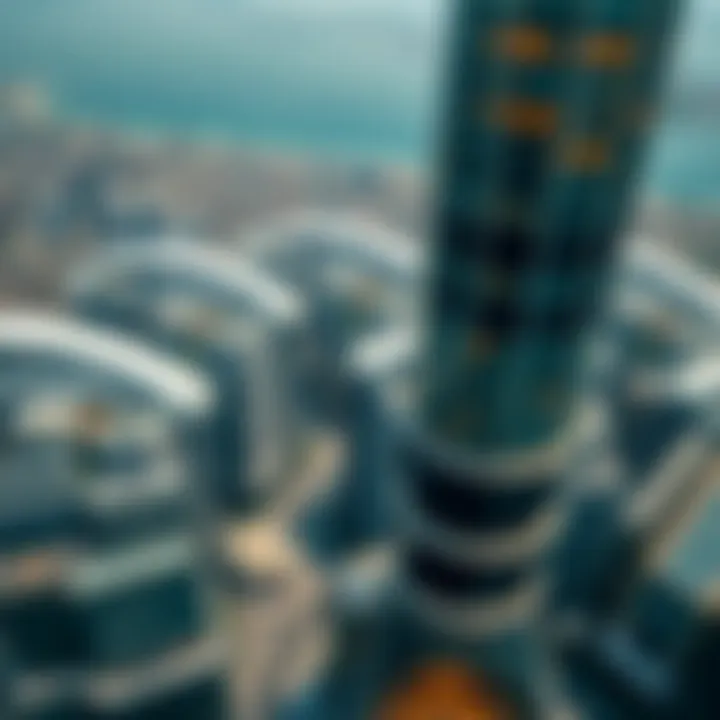
Intro
In a world increasingly defined by its skylines, the second tallest building stands not just as a feat of engineering but as a powerful symbol of ambition and innovation. Far from being merely a structure of concrete and glass, it embodies the aspirations of those who inhabit and invest in the vibrant city of Dubai. This article takes an in-depth look at this architectural wonder, unraveling the layers of its significance, cultural impact, and the booming investment opportunities emerging in its shadow.
As real estate dynamics shift and evolve, particularly in hotspots like Dubai, understanding the nuances surrounding this remarkable structure offers essential insights for various stakeholders. From investors to expatriates, grasping how this towering icon influences market trends can make or break financial endeavors in the region. With this, we embark on a comprehensive exploration of the phenomena surrounding the second tallest building, beginning with key trends in the real estate market.
Understanding the Concept of Tallest Buildings
The tall buildings that touch the skies are not just mere architectural achievements; they are symbols of human aspiration and innovation. Understanding the concept of tallest buildings is vital, especially in the context of modern urban development, as it reflects the aspirations and priorities of societies. This article is set against the backdrop of Dubai, a city known for its insistence on breaking records and reaching new heights, quite literally. High-rises like the second tallest building in the world serve multiple functions, spanning aesthetic value to economic impact.
The pursuit of building the tallest structures on earth highlights significant engineering feats and immense financial investments. Cities tend to view these skyscrapers as not just landmarks but as critical components of their identity and economic goals. They attract tourists, boost real estate values, and enhance the overall skyline, creating a sense of pride among locals. Moreover, initiatives to construct such buildings provoke discussions on sustainability, design innovations, and structural safety.
Definition and Criteria for Measurement
When discussing the tallest buildings, it’s essential to establish what is exactly meant by this term. The definition can seem deceptively simple at first glance, but it’s wrapped in nuances that require careful consideration. The height measurement criteria encompass not just architectural height but also spire height, antenna height, and even the method of measurement itself. For instance, the Council on Tall Buildings and Urban Habitat (CTBUH) focuses on the architectural height, which includes the highest occupied floor but excludes architectural embellishments.
This leads to various questions: Does the building's height maintain authenticity when compared to structures with antennae or spires? How about those that claim a certain height but are primarily towers without floors? Here are some common factors to consider when determining a building's height:
- Architectural height: The top of the building, including spires but excluding antennae.
- Height including spire: This incorporates features extending above the roof, such as spires or decorative elements.
- Height including antenna: This measures from ground to the top of any antenna, promising a very different ranking, indeed.
Grasping these distinctions is crucial not only for categorizing buildings but also for understanding the ambitions behind their constructions.
Historical Context of Tall Buildings
Tall buildings tell the story of human civilization’s growth and evolution. The historical context of skyscrapers stretches back to the late 19th century with the advent of steel frame construction and the elevator. These innovations allowed buildings to soar to previously unimaginable heights, starting with the Home Insurance Building in Chicago—widely considered the first skyscraper, completed in 1885. With each decade, architects and city planners pushed the boundaries of what height could symbolize.
Fast forward to the 20th century, skyscrapers began to embody power and ambition. The Empire State Building, completed in 1931, stood as a beacon of hope during the aftermath of the Great Depression. The construction of the World Trade Center in the 1970s represented economic renewal and global influence. Today, skyscrapers take on varied designs reflecting cultural narratives, with structures like the Burj Khalifa and the Shanghai Tower now vying for the title of the tallest.
Ultimately, the history of tall buildings serves not just as a measure of architectural prowess but also as an annal of societal values, economic priorities, and urban ideals. Investing in such structures indicates a community's vision for itself, marking its place in the global arena—an aspect that cannot be trivialized in discussions surrounding the second tallest building.
A Closer Look at the Second Tallest Building
The sheer height of the second tallest building in the world allows it to tower above the skyline, serving not just as a landmark, but also as a symbol of ambition and innovation. Within the context of this article, a closer examination of this architectural marvel is essential. It sheds light on its specifications, design elements, and the challenges faced during construction. Failing to grasp these foundational aspects would mean missing the broader implications the building holds for urban development and cultural identity.
Location and Specifications
Situated in Dubai, a city known for its relentless pursuit of the extraordinary, the second tallest building occupies a prime location that drastically impacts its significance. It stands proudly in the heart of the downtown area, establishing a focal point where business and leisure converge.
In terms of specifications, this skyscraper reaches an impressive height of 828 meters, featuring 163 floors above ground. Its expansive footprint covers approximately 309,473 square meters. The construction showcases cutting-edge engineering, optimized for both aesthetic appeal and structural integrity. The use of high-strength concrete is a testimony to the innovation that defines this remarkable structure.
Architectural Design and Innovations
Architecturally, the second tallest building boasts a design crafted to evoke feelings of fluidity and grace. The exterior glimmers in the sun, with a combination of reflective glass and steel that enhances its striking appearance. Influences from traditional Islamic architecture are subtly interwoven into its contemporary shell, creating a harmony between culture and modernity.
Moreover, the incorporation of innovative technologies plays a crucial role in its functionality. The building utilizes energy-efficient systems, significantly reducing its carbon footprint. This thoughtful design is not merely about aesthetics; it embraces sustainability by employing effective ventilation systems to bolster airflow and temperature regulation.
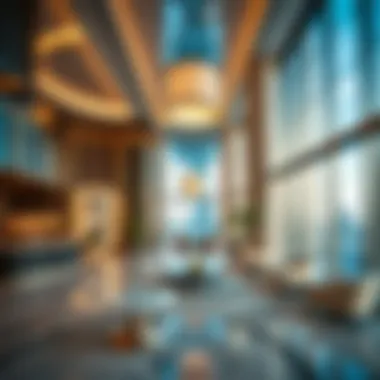
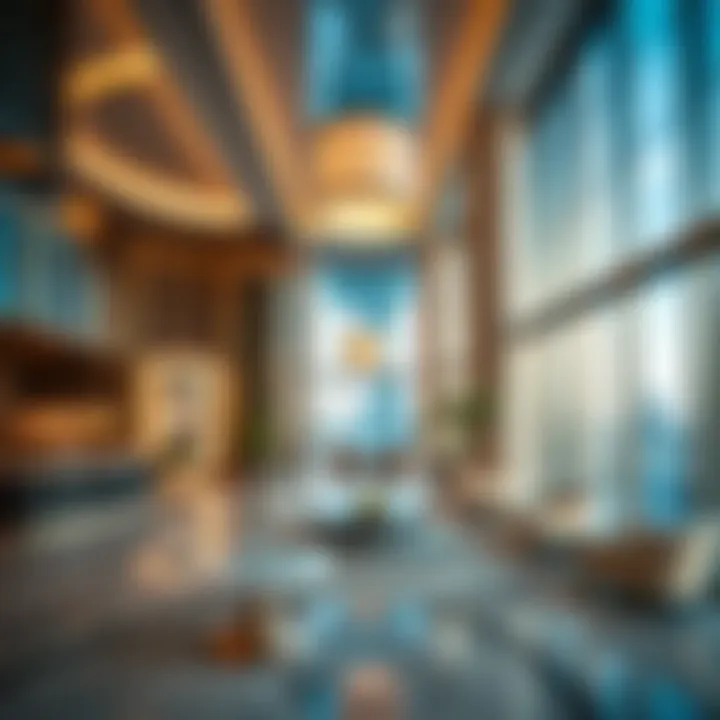
Construction Timeline and Challenges
The journey of erecting this monumental structure was not without its hurdles. The construction commenced in 2004 and concluded in 2010, a timeline that reflects the ambition and determination involved. This six-year period was marked by the need to overcome unique challenges, such as extreme weather conditions and the complexities of deep foundation work due to the underlying geology of the area.
The approach adopted for this skyscraper involved innovative construction techniques, including the use of a "jump form" system which allowed for rapid vertical growth. Nevertheless, unforeseen delays due to logistical issues and the intense scrutiny for safety standards presented additional obstacles to the project's timeline.
Cultural and Economic Significance
The second tallest building in the world, an architectural darling of our times, stretches beyond mere height. It represents both cultural identity and economic vitality, factors that are crucial to the broader narrative of urban life, especially in Dubai. In this bustling metropolis, the skyscraper stands not just as a structure but as a symbol of ambition, innovation, and resilience. This section probes into its cultural resonance and economic ramifications, offering insights that whet the appetite of investors, expatriates, and any keen observer of urban development.
Impact on Local Culture
The cultural implications of such a towering edifice can hardly be overstated. In Dubai, the building has become a canvas for public art and community activities. From light shows that dazzle the night sky to cultural festivals hosted at its base, this landmark fosters a sense of belonging among locals and visitors alike. The way this building shapes the skyline is not just a matter of aesthetics; it encapsulates the story of a city that favors the extraordinary.
Moreover, it functions as a magnet for tourism, attracting folks from all walks of life eager to experience its unique offerings. This foot traffic brings vibrant energy to the neighborhood, enhancing local culture through market interactions, street performances, and culinary experiences that enrich the community’s tapestry. It’s like a catalyst that promotes dialogue among cultures, which is essential in a city famed for its diversity.
The iconic status it has attained also contributes to how residents perceive their city. The building serves as a source of pride, asserting Dubai's role as a global player. When locals speak about their home, the skyscraper often comes up as a point of reference, illustrating how physical structures can shape collective identity.
Economic Benefits and Opportunities
From an economic perspective, the skyscraper acts as a beacon of prosperity. The construction and ongoing operations create numerous job opportunities, stimulating both skilled and unskilled labor markets. Workers from various backgrounds find employment in everything from construction to hospitality, thanks to the ecosystem that develops around such a large-scale project.
Furthermore, the building significantly contributes to the local economy through increased tourism. According to recent estimates, each year, millions flock to see what can only be described as a marvel. This influx boosts local businesses, from hotels to restaurants, thereby revamping the economic landscape.
Investors can't ignore the positive implications for property values. The presence of such a notable landmark often inflates surrounding real estate prices, creating wealth opportunities for homeowners and landlords alike. Retirees and expatriates looking to settle in Dubai tap into these potential investment avenues.
"The second tallest building isn't just about reaching the sky; it's about lifting the entire community with it."
In terms of future developments, the vicinity surrounding the skyscraper is likely to see infrastructural enhancements, making the entire area more accessible. This continuous growth trajectory creates a halo effect, fostering even more sophisticated investments and developments that can revitalize ancillary sectors.
The Building's Role in Urban Development
The role of the second tallest building in the world goes beyond sheer height and striking architecture. It symbolizes a shift in urban dynamics and can reshape the skyline as well as the socio-economic fabric of its surroundings. In cities experiencing rapid growth, such buildings often emerge as focal points for economic activity, cultural interaction, and infrastructural developments. This section will explore these dimensions, focusing on how this skyscraper integrates into the urban landscape, its impact on property values, and enhancements to infrastructure and connectivity in Dubai.
Integration into the Urban Landscape
The integration of the second tallest building is a topic of great importance. This skyscraper acts like a lighthouse in a dense forest, guiding investment, tourism, and residential interest toward its base. As an eye-catching feature of the skyline, it not only represents architectural ambition but also generates a sense of identity for the city of Dubai.
Moreover, an important aspect of its integration is the incorporation of public spaces around the structure. For instance, landscaped parks, retail areas, and pedestrian walkways create a hub where the community can gather. This not only enhances the aesthetic appeal but also encourages social interaction. Furthermore, the area surrounding the building often experiences an upsurge in art installations, pop-up markets, and community events, contributing to a vibrant urban environment.
Benefits of integration can include:
- Increased foot traffic, leading to higher sales for local businesses.
- Creation of platforms for cultural exchanges through public events.
- A strengthened public transport system connecting various urban areas effectively.
Effects on Surrounding Property Values
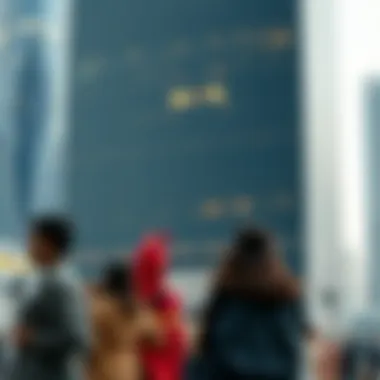
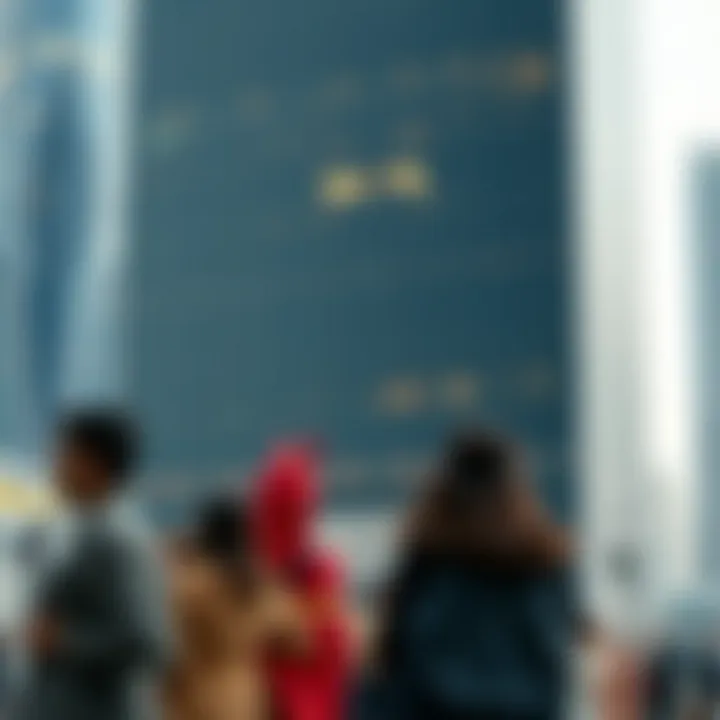
It's often said that the value of a property's location is bolstered by its proximity to significant landmarks. The second tallest building influences surrounding property values consistently. Homebuyers and investors alike are drawn to areas near iconic structures, as they usually come with the promise of prestige and greater appreciation over time.
In Dubai, the ripple effects are evident. Properties within a convenient distance from this skyscraper have seen valuations skyrocket. Newly built residential spaces often cater to high-income individuals, which elevates the real estate market. As a result, this phenomenon can lead to a dual effect: while property owners become wealthier, it can also create affordability challenges for those hoping to enter the market.
Some of the key impacts on property values include:
- Increased demand for residential, commercial, and retail properties in the vicinity.
- The establishment of upscale amenities and services that regions develop as a result of heightened desirability.
- Changes in demographics, as affluent buyers flock to neighborhoods near the skyscraper, shaping a new urban identity.
Infrastructure and Connectivity Enhancements
With the growth of any large-scale building, infrastructural upgrades are often a no-brainer. The second tallest building in the world demands significant investments in infrastructure to accommodate the influx of people and businesses. This often means an improved road network, public transportation options, and vital utilities that create a well-connected urban ecosystem.
For residents, enhancements mean better ways to move around the city without relying solely on personal vehicles. The establishment of advanced public transport links, including metro stations or dedicated bus routes, can alleviate traffic congestion while promoting sustainable travel. Furthermore, these developments can help reduce carbon footprints.
Key connectivity improvements are often seen in:
- Enhanced metro or tram services connecting the building to key areas of the city.
- Wider roads and improved traffic management solutions.
- Integration of cycling paths and pedestrian-friendly infrastructure, encouraging eco-friendly transport.
"A well-connected urban fabric enhances the quality of life for its residents, making daily commutes less burdensome and paving the way for greater economic activity."
In summary, the second tallest building in the world plays a pivotal role in urban development, impacting not just the immediate area but the broader fabric of Dubai as well. Its integration into the urban landscape, effects on surrounding property values, and the resultant infrastructural enhancements exemplify how towering structures can lead to a more connected, vibrant, and economically dynamic city.
Challenges Faced by Tall Buildings
The construction and existence of tall buildings present both opportunities and hurdles. High-rise structures, particularly those vying for the title of the tallest, are at the forefront of architectural ambition, yet they encounter unique challenges that redefine urban planning and management. Recognizing these challenges is crucial for a comprehensive understanding of the dynamics involved. Addressing these difficulties not only helps in enhancing the longevity and safety of such buildings but also ensures they are sustainable and beneficial for the community as a whole.
Environmental Considerations
High-rise buildings significantly impact the environment, and this influence can be both positive and negative. On one side, they can help conserve land by accommodating a larger population in a smaller footprint, which is especially vital in densely populated areas like Dubai. However, their construction and existence come with considerable environmental burdens.
For instance, the sheer volume of materials like concrete and steel used in building these skyscrapers contributes substantially to carbon emissions when mined and transported. Additionally, a skyline filled with these structures can disrupt local weather patterns. The phenomenon known as the "urban heat island effect" becomes more pronounced, as tall buildings absorb and retain heat, raising local temperatures. Furthermore, energy consumption becomes a significant concern; tall buildings require extensive lighting and climate control systems, demanding more resources which could lead to increased greenhouse gas emissions.
Several initiatives are emerging to counteract these environmental concerns. Many architects and builders are pivoting towards green technologies, such as:
- Energy-efficient systems: Incorporating smart technologies that manage energy use efficiently.
- Sustainable materials: Utilizing recycled materials or those with a lower carbon footprint in the construction process.
- Green roofs and vertical gardens: These not only enhance insulation but also improve air quality and biodiversity.
The challenge lies in integrating these strategies effectively without compromising the design and functionality of the buildings.
Safety and Maintenance Issues
Safety and maintenance are paramount concerns for skyscrapers and are often intricately linked to the building's operational success. Given their height, tall buildings face unique safety challenges that require stringent measures and meticulous planning.
One significant aspect is the response to emergencies such as fires or earthquakes. Tall buildings must comply with strict codes, which can vary by region. For instance, how evacuation procedures are planned needs to accommodate the vertical nature of these buildings, which can create bottlenecks in exits. Additionally, modern skyscrapers are incorporating advanced safety technologies such as:
- Smoke control systems: These hinder the spread of smoke, improving air quality during emergencies.
- Seismic isolators: Allowing buildings to sway and absorb shocks, reducing the risk of structural failure.
Furthermore, building maintenance is another critical aspect that can easily be overlooked. With heights reaching unimaginable limits, regular maintenance tasks—such as window cleaning, facade repairs, and inspections of mechanical systems—become much more complex. Specialized equipment like suspended scaffolding is often needed just to reach certain areas of the structure, increasing maintenance costs and time.
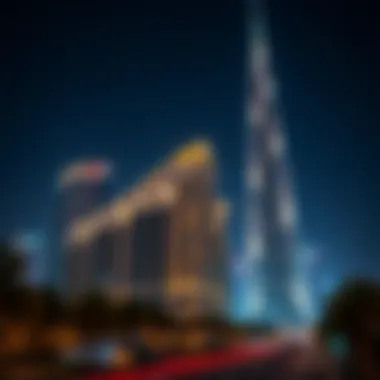
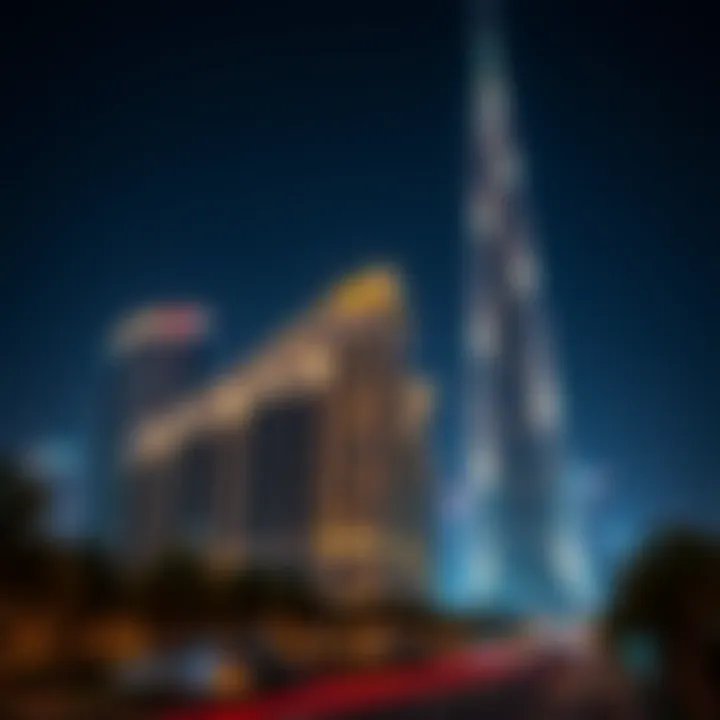
Properly tackling these challenges not only ensures the safety of occupants but also preserves the building's integrity and extends its lifespan in a market where longevity adds to value.
Future Trends in Skyscraper Construction
The landscape of skyscraper construction is constantly evolving, driven by technological innovations and a growing awareness of sustainability. The second tallest building in the world represents not just an architectural marvel but also a beacon guiding future developments in high-rise structures. Understanding these trends is essential for investors, architects, and real estate professionals keen on navigating the shifting tides of urban development.
Sustainability in High-Rise Buildings
Sustainability is no longer just a buzzword; it has become a necessity in the world of architecture. As cities expand and climate change becomes an undeniable reality, skyscraper designers are in the hot seat to create buildings that not only scrape the sky but also tread lightly on the Earth. Incorporating green materials, energy-efficient systems, and water conservation measures are some of the leading strategies.
Examples include:
- Green Roofs and Vertical Gardens: These features not only enhance the aesthetic appeal of a building but also improve air quality and insulation.
- Renewable Energy Sources: Many new skyscrapers are integrating solar panels and wind turbines to minimize their reliance on fossil fuels.
- Smart Water Management Systems: These systems recycle water, reducing consumption and offsetting the heat island effect commonly found in urban areas.
Investing in sustainability has proven beneficial for property value and appeal. Buyers today, especially expatriates and environmentally conscious investors, are looking favorably at properties that showcase an alacrity towards responsible building practices.
Technological Advancements
Advancements in technology have paved the way for new possibilities in skyscraper construction. From the design phase to construction and maintenance, technology is making significant impacts.
The following innovations are shaping the future:
- Building Information Modeling (BIM): This software allows architects to create 3D models of a building before construction begins. It helps mitigate errors and streamline the construction process, saving both time and costs.
- 3D Printing and Prefabrication: These methods are changing how materials are produced and assembled, reducing on-site labor costs and material waste.
- Smart Technologies Integration: Features like smart elevators that adjust operations based on traffic patterns in the building and energy management systems that optimize resource use in real-time are increasingly commonplace.
Incorporating these technologies offers substantial long-term benefits, driving down operational costs significantly while enhancing occupants’ experience. Additionally, investors can benefit from lower maintenance costs, making skyscrapers appealing assets.
"With each passing day, skyscrapers are transforming into not just buildings but ecosystems capable of maintaining themselves in power and resource usage."
Culmination
In wrapping up our exploration of the world's second tallest building, it becomes evident that the significance of such a towering structure extends far beyond its architectural prowess. The sheer height and innovative design not only mark a milestone in engineering but also serve as a symbol of ambition and progress, particularly for a city like Dubai that thrives on redefining its horizons.
Reflections on the Building's Legacy
As we reflect on the building's legacy, one can hardly overlook its profound impact on both the skyline and the local identity. This structure stands as a beacon of modernity in a historic landscape, melding together the old and the new. Its tallest rivals have set the stage for what future constructions aspire to achieve, influencing architectural trends globally. Additionally, the innovative technologies utilized during its construction have paved the way for more sustainable practices in future developments.
The legacy addressed here is not limited to its physical presence; it has ignited discussions about the identity of urban spaces.
- The integration of green spaces within the project challenges the notion that urban environments must solely be concrete jungles, promoting a lifestyle that is environmentally mindful.
- Local communities feel a sense of pride in having a world-renowned structure that is a testament to their culture and economic strength.
- Furthermore, it invites a constant stream of visitors, which not only boosts tourism but also inspires other regions across the globe to elevate their own architectural dreams.
In essence, the building has become part of Dubai's story, intertwining with its unique cultural narrative and economic aspirations.
Implications for Dubai's Real Estate Future
Looking forward, the implications of this towering structure on Dubai's real estate market are manifold. Firstly, it has set a benchmark for property values in the vicinity. Properties that were once considered mid-tier suddenly experience a surge in interest and valuation simply due to proximity to this architectural giant.
- Rental prices in the area are likely to soar, calling for an adjustment in housing strategy to cater to a more affluent demographic that seeks luxury and modern amenities.
- Investors are now more eager to explore high-rise constructions, hence increasing competition in the market. Developers are focusing not only on height but also on innovative designs that incorporate luxury, technology, and sustainability to appeal to discerning clients.
Additionally, there’s a ripple effect at play. The construction of nearby infrastructure—be it roads, public transit, or leisure facilities—becomes essential to support the influx of residents and tourists alike.
As various stakeholders—investors, local government, and residents—continue to navigate this evolving landscape, one can forecast a dynamic shift in Dubai's real estate sector.
Thus, this second tallest building is not merely a structure of glass and steel; it encapsulates the aspirations, challenges, and economic evolution of Dubai, propelling it to new heights in the global arena.



